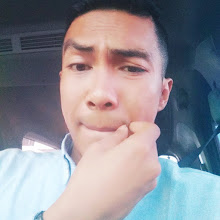Tenth soldier unity are: Warrior Wirobrojo, Dhaeng Soldier, Soldier Patangpuluh, Jogokaryo Soldier, Soldier Mantrijero, Prawirotomo Soldier, Soldier Ketanggung, Nyutro Soldier, Soldier Soldier Surokarso and Bugis. Today, ten soldiers unity can still be seen by the general public at least three times throughout the year, namely at the ceremony Garebeg Mulud, Garebeg Large and Garebeg Shawwal, in the north of the square palace Ngayogyakarta.
Here's a comparison with ancient warrior clothing which was written by Thomas Stamford Raffles in his book, History of Java.
At first the Kingdom Age, each kingdom has a warrior or a soldier to protect his kingdom, as well as the kingdoms in Java at the time. To find out how the soldiers at that time one of them is how to dress.
Pictures next to a picture of the armor of Java. Similarly, as written Thomas Stamford Raffles in his book, History of Java. The armor is a special clothing used when going forward into battle. Java-style war clothing consists of trousers that buttoned. Length from waist to ankles. In addition to generally pants trousers to fight the so-called Kathok also comes with shorts. Only shorts are placed (used) outside the trousers. So roughly like clothing Super Man with panties placed outside his trousers.
Pants are generally made of a soft cloth or even silk. Besides the armor of Java is also equipped with a divan, which is a kind of belt that is wrapped around the body as much as 7-8 times. This divan serves to protect the body from the waist to the chest and back. So similar in functionality to the harness. Generally amben also made of great fabric or silk.
Clothes Java-style war is also equipped with a tight vest with no buttons are often called Sangsang. On top there Sangsang vest with buttons that starts from the neck to the abdomen. Such vests often called bra buckle. On top of all kinds of clothes worn long sleeves called Sikepan. This long-sleeved shirt when seen model or cut somewhat similar to long jacket. This shirt covers the entire upper body. Generally, the armor is also equipped with headgear. Sometimes the head cover is double. The first head cover is generally in the form of cloth tied and concluded. Then cover the head outside is usually a sort of hat or headgear kuluk.
To put the sword, the sword is called Angger rope wrapped around the waist. Sword is generally placed in the left side of the waist. Three kerisses placed on either side of the waist and the blade again put on the back. Keris charged is generally composed of a personal kris, the keris heritage, and a dagger that given by the father-in-law when the person is married. Keris of law is generally placed on the left side of the waist.
In addition to the weapon of keris, swords, and wedung, mostly Javanese soldiers also carry long-stemmed spear to fight. In addition of course, shields and arrows.
To demonstrate the superiority of this war clothes are often still equipped with the jewelry in the form of a ring or a necklace of gold owned by the person. Seen such things seem also that to fight any people feel the "need" for bersombong themselves or show off.
It seems happenings that exists and happens in Java when it concerns Raffles so he was interested to document through writing and drawing / painting. Written at the time of the possibility of things that seem ordinary. But after that time over 200 years, then things are on record be tasted amazing because we will never have again significantly what the Raffles wrote. Java is synonymous with Jogja-Solo-Central Java, East Java have seized so much attention Raffles. Thereof we gain invaluable historical record. Java exotic at that time become so complete with all the modern advances and damage.






No comments: